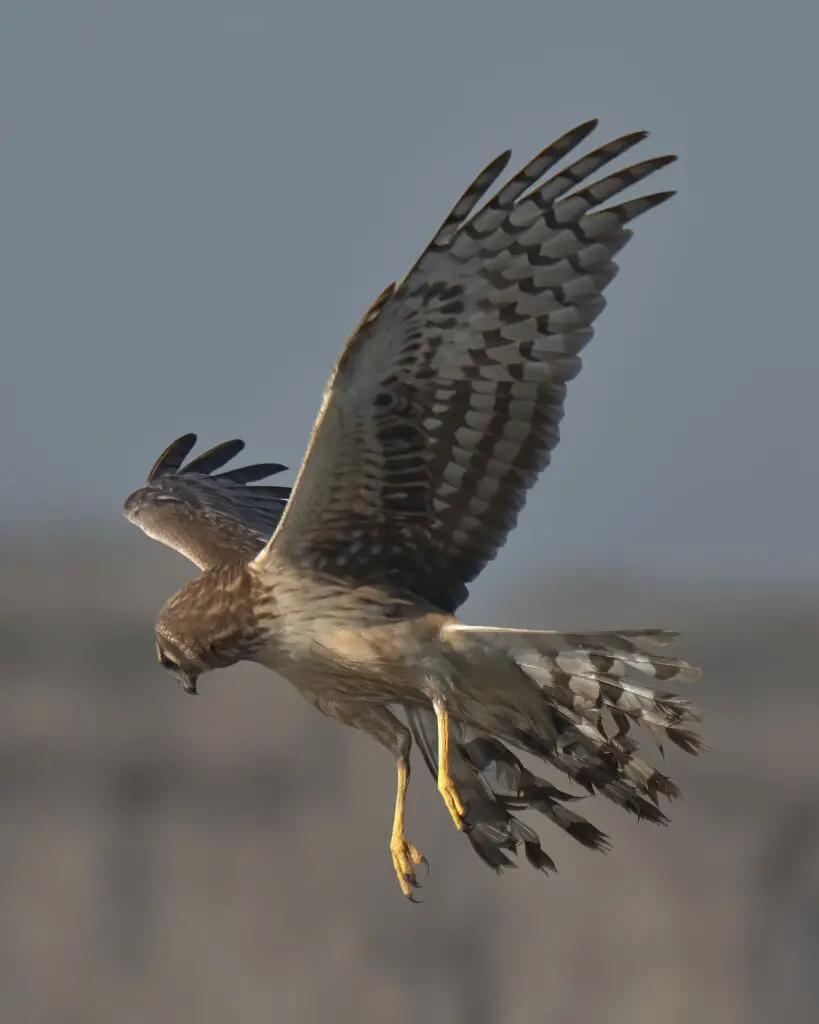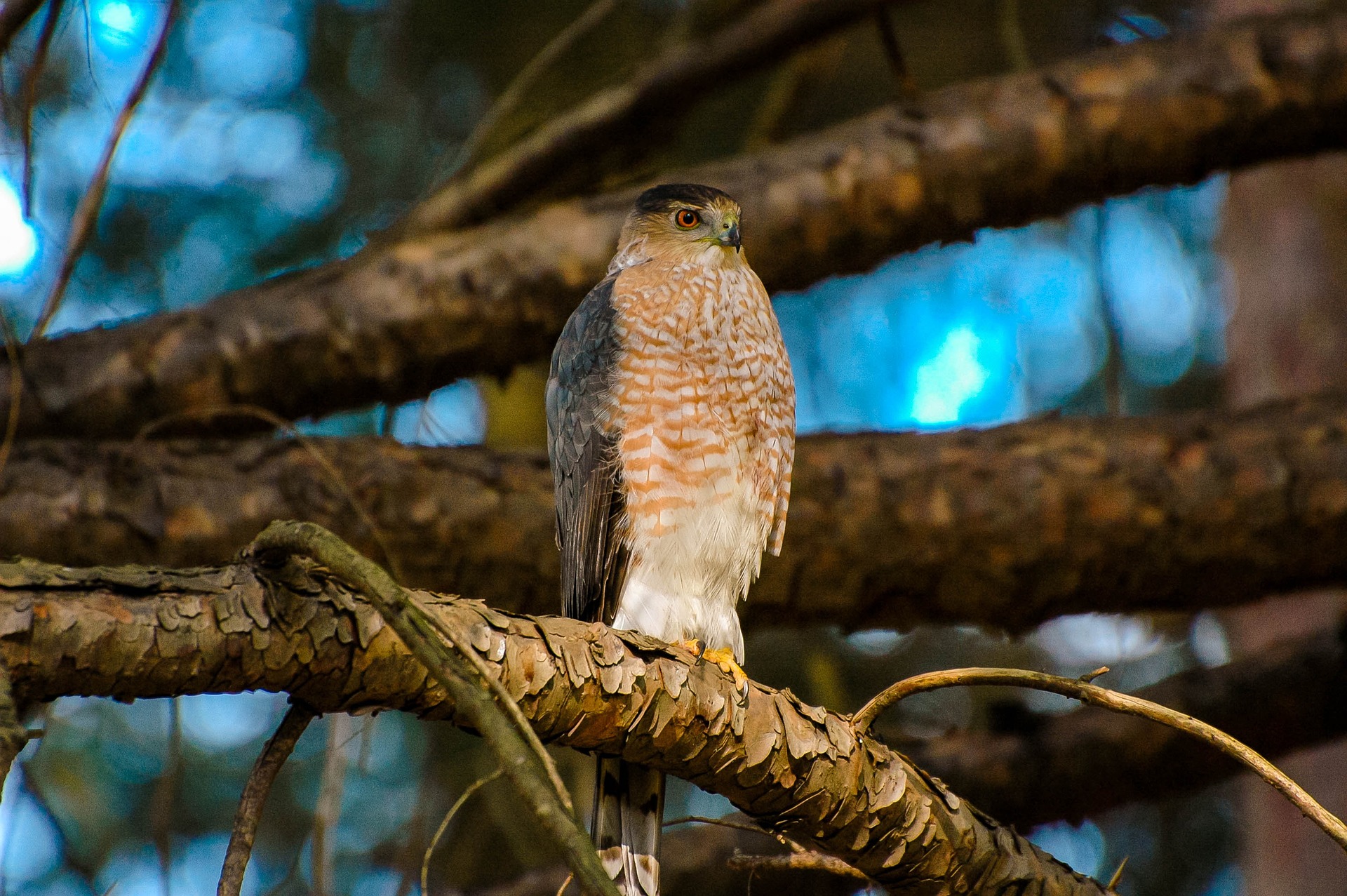There are various types of hawks in the world, but one of the most beautiful is the copper’s hawk. This majestic bird is found in parts of North and South America and is known for its distinctive reddish-brown colouring. However, copper’s hawks are not common birds, and a lot of mystery still surrounds them, like what kind of things they can pick up.
A coppers hawk can pick up small prey, including small dogs or cats. These birds of prey use their sharp talons and beak to grasp onto their prey so they have a firmer grip, and they can even lift small animals that are often more than their own weight. As long as the Cooper’s hawk deems their prey liftable, they will, without a doubt, attack.
Cooper’s hawks are known to prey on smaller mammals. So often, small dogs, cats and even hampsters fall prey to them, so my aim today is to take a look at the evidence and see if we can come to a conclusion on what they can pick up and how to associate them with pets when kept in falconry.

Does a coopers hawk carry a lot of weight, and why is this important to know?
Cooper’s Hawks are known for being able to carry a lot of weight. This is because they have a very powerful grip and can hold onto their prey with their talons. They also have very strong legs that help them perch on their prey. This is important to know because it means Cooper’s Hawks can kill larger prey than other birds of prey. For example, they have been known to kill rabbits and squirrels that weigh up to 3 pounds. This is why Cooper’s Hawks are such an important part of the ecosystem – they help to keep the population of smaller animals in check.
Are females capable of carrying more weight than males?
According to an expert study, female coopers hawks are capable of carrying more weight than males. The study found that, on average, female hawks can carry up to 10% more weight than their male counterparts. The difference in carrying capacity is due to the fact that female hawks have larger breast muscles, which allows them to generate more lift. In addition, the study found that female hawks also have stronger leg muscles, which helps them better support their prey’s weight. While the 10% difference in carrying capacity may seem small, it can make a big difference when successfully hunting and feeding a family. Consequently, the ability of female coopers hawks to carry more weight is an important adaptation that helps to ensure the survival of the species.
What other small pets might a coopers hawk attack?
When kept as pets, coppers hawks generally get along well with other small animals. However, there are some exceptions. Cooper’s hawks have been known to attack rabbits, guinea pigs, and even hamsters. In most cases, these attacks are simply the result of the hawk mistaking these small animals for prey. However, coppers hawks have also attacked larger animals, such as cats and dogs. To prevent your Cooper’s hawk from becoming aggressive, it is important to provide plenty of toys and perches for it to play with and explore. You should also avoid housing your Cooper’s hawk with any other animals that it might perceive as a threat. We have a complete post covering what a Cooper’s Hawk eats, so have a look.
Do older coopers hawks have the ability to carry more than younger ones in their prime?
Hawks are among the most skilled predators in the sky, able to spot their prey from great heights and then swoop down for the kill. Their powerful talons and sharp beaks make them lethal hunters, and many smaller animals fear them. But not all hawks are created equal. Studies have shown that older coopers hawks have the ability to carry more than younger ones in their prime. This is due to the fact that the older hawks have more experience and know how to better utilize their resources. They are also better at judging distances and selecting the best place to strike. As a result, they are able to take down larger prey than their younger counterparts. So next time you see a coopers hawk, take a moment to appreciate the skill and experience of this amazing bird of prey.
Will a coppers hawk be able to carry the same amount of weight if it rains?
When it rains, the weight of a copper’s hawk will be affected. The water will make the feathers heavier, and the hawk will not be able to carry as much weight. Hawks are very good at flying in the rain, but they can only carry so much weight. Factors such as the size of the bird and the type of prey affect how much weight a hawk can carry, such as the size of the bird and the type of prey. If a hawk is carrying a lot of prey, it may not be able to fly as well in the rain. Hawks are very strong flyers, but they are not invincible. When it rains, they may have to go to a higher perch to stay dry and keep their feathers from getting too heavy.

Are coppers hawks prone to dropping heavy prey?
While copper hawks typically kill their prey with their powerful talons, there have been reports of these birds dropping heavy prey from great heights. Scientists believe that this behaviour may be linked to the bird’s hunting strategy. By dropping its prey from a high place, the copper hawk can stun or kill the animal, making it easier to eat. In some cases, this behaviour may also be used to defend the bird’s territory from other predators. Regardless of the reason, it is clear that copper hawks are capable of dropping heavy prey from considerable heights.
If you have a pet, please check and ensure your furry friend is safe. The Cooper’s hawk can be very aggressive when it comes to hunting and may not hesitate to snatch up a small cat or dog. If you are into falconry and you have a raptor and pets, make sure they are bonded from the early stages of their life.

